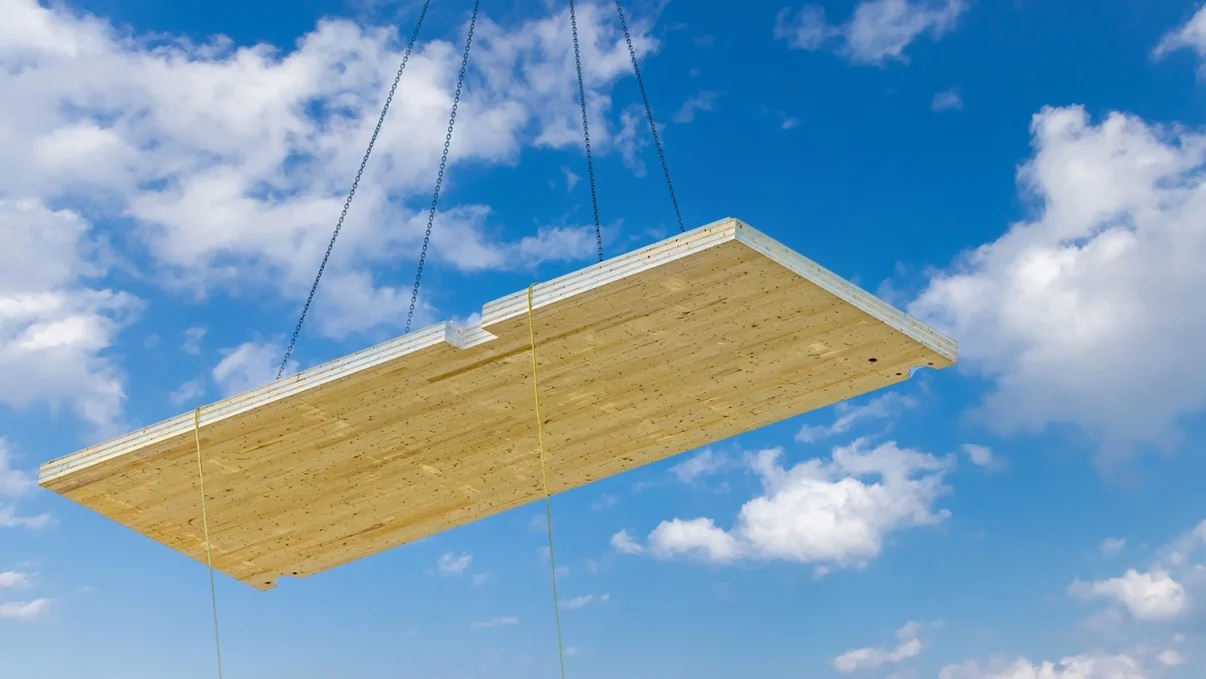The U.N.’s International Panel on Climate Change (IPCC) sixth assessment report on climate change is an urgent call to action for the building industry. The report outlines a “last chance” opportunity for global society to make significant reductions in greenhouse gas emissions to limit average global temperature rise below 1.5°C and prevent a runaway, irreversible climate change scenario. To mitigate the worst effects of climate change, we must make buildings less carbon intensive. Designing with mass timber is one solution that is quickly gaining momentum. With an inherently low carbon profile, mass timber can make a big impact in tackling climate action in the built environment.
The effects of climate change like drought, extreme weather events, and sea level rise, have far-reaching impacts on the health and well-being of all living things. Even if global warming is limited to 1.5°C, up to 14% of species assessed by the IPCC report will face a high risk of extinction. According to the IPCC report, across the globe “approximately 3.3 to 3.6 billion people live in contexts that are highly vulnerable to climate change.”
The building industry accounts for approximately 39% of all global greenhouse gas emissions. At a U.N. climate summit in 2019, Gensler co-CEO Diane Hoskins introduced the Gensler Cities Climate Challenge (GC3), our firmwide commitment to carbon neutrality in our work and operations by 2030. The IPCC report notes that an additional 2.5 billion people are projected to move to urban areas by 2050. This global migration poses a tremendous opportunity to adapt the urban built environment to reduce greenhouse gas emissions.
The Role of Embodied Carbon
Global greenhouse gas emissions can be categorized in two major categories: embodied and operational emissions. Embodied emissions are the ‘baked in’ carbon dioxide (and equivalent gas) emissions associated with material sourcing, manufacturing, and construction, and end of life. Operational emissions are associated with the building performance after completion. Both types of emissions are generally measured in carbon use intensity (kgCO2e/SF) and are combined to understand the overall carbon profile of a project.
Although operational emissions are typically 60-70% of the overall emissions over the lifespan of a project, embodied emissions will contribute approximately 75% of overall emissions associated with new projects over the next eight years. As the IPCC report outlines, the next five to 10 years are the most critical in limiting global temperature rise to 1.5°C. Embodied emission reductions strategies are equally, if not more, important than operational emission reduction measures.

What are the materials that contribute to embodied carbon emissions and what strategies do we have available to us to reduce these emissions? Structural materials such as steel and concrete account for most greenhouse gas emissions due to energy intensive manufacturing processes. Concrete alone accounts for approximately 10–15% of all embodied carbon emissions associated with the built environment. To change the trajectory of the building industry, we must find alternatives to steel and concrete.
The Promise and Potential of Mass Timber
It is in the context of the climate crisis that the mass timber movement has taken root and spread. Mass timber is an umbrella term for a wide variety of engineered wood products that can structurally replace steel and concrete and lower carbon emissions.
There are two main reasons mass timber structural systems have relatively low embodied carbon profiles: avoided emissions from not using steel and concrete, and carbon sequestration through photosynthesis over the lifecycle of the harvested trees. According to the IPCC report, strategic conversion prevention of forests and other ecosystems can reduce four gigatons of carbon dioxide emissions a year, second only to solar energy as a potential contributor to net emission reduction by 2030.
So how does harvesting trees protect forest ecosystems? The purchase of sustainably sourced mass timber products assigns monetary value to forests, conserving the existing forest stock by discouraging land use conversion. Here are five things developers need to know to include mass timber in their next project:
- Design teamwork is essential. Engaging manufacturers, structural engineers, and industry experts early and throughout the design process is a key to success.
- Project location matters. Timber availability and species have significant implications on costs and aesthetics.
- Think long term. Although there is typically a 5-10% up front material premium, the prefabricated timber construction process can save up to 30% in the construction schedule and lead to overall cost savings.
- Know where your wood products come from. Mass timber products won’t help with carbon emissions if they are not harvested with sustainable forestry practices.
- It’s not an all or nothing decision. Mass timber can be combined with concrete and steel in a hybrid system to reduce emissions and achieve programmatic constraints.
Although not a silver bullet, mass timber is one of many strategies industry players can leverage to reduce global greenhouse gas emissions. Timber is a renewable resource that is underutilized as a structural material. North American forests produce enough timber to build a 100,000-sf mass timber building every seven minutes. Tree harvesting occurs on less than 2% of forest land annually, compared to close to 3% of forest land that is annually disturbed by insects, disease, and fire.
Mass timber projects can contribute to holistic sustainability stories that are attractive to tenants, benefit the environment, and are good for the bottom line. What are we waiting for?
More from Author
Gensler | Oct 21, 2024
3 surprises impacting the return to the office
This blog series exploring Gensler's Workplace Survey shows the top three surprises uncovered in the return to the office.
Gensler | Jun 26, 2024
5 ways ESG can influence design and create opportunities
Gensler sustainability leaders Stacey Olson, Anthony Brower, and Audrey Handelman share five ways they're rethinking designing for ESG, using a science-based approach that can impact the ESG value chain.
Gensler | May 20, 2024
10 spaces that are no longer optional to create a great workplace
Amenities are no longer optional. The new role of the office is not only a place to get work done, but to provide a mix of work experiences for employees.
Gensler | Apr 15, 2024
3 ways the most innovative companies work differently
Gensler’s pre-pandemic workplace research reinforced that great workplace design drives creativity and innovation. Using six performance indicators, we're able to view workers’ perceptions of the quality of innovation, creativity, and leadership in an employee’s organization.
Gensler | Mar 13, 2024
Trends to watch shaping the future of ESG
Gensler’s Climate Action & Sustainability Services Leaders Anthony Brower, Juliette Morgan, and Kirsten Ritchie discuss trends shaping the future of environmental, social, and governance (ESG).
Gensler | Jan 15, 2024
How to keep airports functional during construction
Gensler's aviation experts share new ideas about how to make the airport construction process better moving forward.
Gensler | Dec 18, 2023
The impacts of affordability, remote work, and personal safety on urban life
Data from Gensler's City Pulse Survey shows that although people are satisfied with their city's experience, it may not be enough.
Gensler | Nov 16, 2023
How inclusive design supports resilience and climate preparedness
Gail Napell, AIA, LEED AP BD+C, shares five tips and examples of inclusive design across a variety of building sectors.
Gensler | Oct 16, 2023
The impact of office-to-residential conversion on downtown areas
Gensler's Duanne Render looks at the incentives that could bring more office-to-residential conversions to life.
Gensler | Sep 13, 2023
Houston's first innovation district is established using adaptive reuse
Gensler's Vince Flickinger shares the firm's adaptive reuse of a Houston, Texas, department store-turned innovation hub.
















